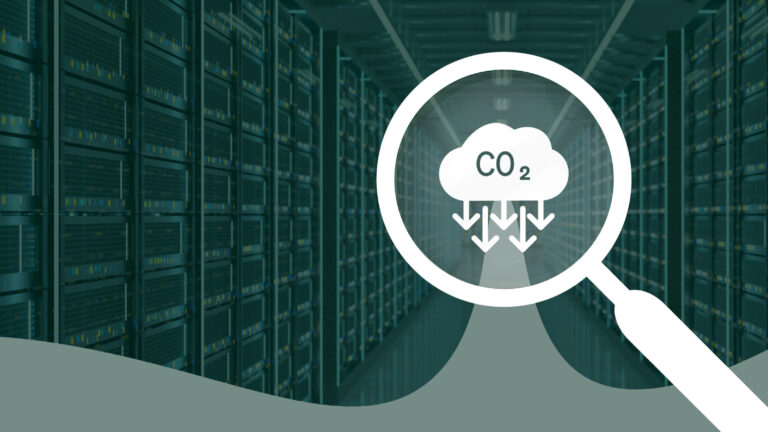Why sustainability in advertising is a business imperative
Sustainability in advertising can seem more conceptual than a tangible strategy. What does it actually look like in practice? And why is it so important right now?
As climate concerns continue to affect our daily lives and, by extension, the advertising ecosystem, the urgency for companies to make tangible progress toward sustainability goals is only increasing. Today, sustainability isn’t just a buzzword—it’s a necessity to future-proof your business.
Let’s talk about sustainability, what it means to the advertising ecosystem as a whole, and how we can break this lofty concept into actionable steps toward progress.
Why is sustainability key to future-proofing your business?
Consumers today are increasingly aware of broad societal and environmental issues, which extends to their purchasing habits—one poll found 78% of US consumers report sustainability concerns are important to them in their shopping choices. And consumers aren’t the only ones with high expectations. According to an Edelman Trust report, 71% of employees say societal impact is either a strong expectation or a deal breaker when considering a job.
Brands and companies need to meet customer and employee expectations, while also adhering to government regulations. These combined pressures mean that making progress on sustainability goals is not just about doing good—it’s a business imperative.
The actions brands take impact the entire advertising ecosystem and inspire sustainable actions even more broadly. Not only do their partners and suppliers face the same pressures from customers and employees, but now they also face the same from the brands they work with.
With this, we’re seeing a fundamental shift in how companies make greener decisions to future-proof their businesses. There’s a lot at stake: companies that don’t adapt risk eroding customer trust, facing regulatory challenges, and losing out on hiring and retaining talent.
But those who embrace sustainability can build stronger relationships and gain a competitive edge—while promoting values that set the tone for the industry as a whole and ensure a livable planet for future generations.
Practical steps toward greener advertising
Let’s examine some of the practical ways you can improve sustainability within your organization:
1. Rely on the experts
Sustainability is an area where expert guidance can be hugely impactful. Don’t hesitate to go beyond your own organization to find the support you need to enact change, for example by joining industry organizations or working groups, like Ad Net Zero, the ANA, the 4As, the IAB, and IAB Tech Lab. Broadening your network can be invaluable in learning from best practices and keeping pace with evolving guidance.
Building dedicated support within your organization is important, too, as implementing sustainable change will require collaboration across the company. As an example, your company needs to understand and adhere to governmental regulations, which can shift frequently—whether at the local, national, or global level.
You can task your legal team or other dedicated employees with monitoring changes and updates as they’re issued by government bodies, as well as staying on top of evolving industry standards and science-based target guidelines.
This will help you avoid last-minute scrambles and plan systems and processes to ensure operations remain compliant, ethical, and aligned with the latest guidance.
2. Work to understand your existing carbon footprint
As the adage goes, “you can’t manage what you can’t measure.” Before you can set sustainability goals, you must audit your current status and understand your company’s carbon footprint. This will give you a baseline from which to measure progress.
Even if you don’t yet have a way to measure your company’s exact emissions, you can start by identifying areas that tend to drive high emissions—think about travel, media, events, technology infrastructure, and your office operations. Brands and agencies should also factor in creative production and media buying.
You’ll want to evaluate your scope 1, 2, and 3 emissions. Scope 1 emissions occur from sources your business owns—think fuel emissions from a vehicle fleet. Scope 2 emissions are those a company causes indirectly, like electricity used in your offices. Scope 3 emissions tend to be the largest contributor in advertising. These are indirect emissions from sources throughout a company’s supply chain.
Once you’ve pinpointed these areas, identify relevant stakeholders and create dedicated workstreams focused on assessing carbon impact and identifying sustainable improvements. These first steps can unearth quick wins and be a starting point to get your company on a more sustainable path.
However, real practical action will require a robust plan based on a formal audit of your company’s emissions. If you need help, there are companies that specialize in this, like 51toCarbonZero, that can be a great resource.
3. Set clear sustainability goals
Once you understand your current footprint, you can set clear sustainability goals to reduce carbon emissions to a certain point by a certain time. While this can seem overwhelming or intimidating to begin addressing, we all must start somewhere.
On top of keeping industry and regulatory guidance in mind, proactively setting self-regulated goals and adhering to your own high sustainability standards means you can stay ahead of minimum regulatory requirements and lead by example.
Create realistic timelines for your goals, considering both the short-term and long-term. This will look different for every business. Some may choose to set a self-regulated goal or net-zero commitment, and some may officially or publicly commit to a science-based target—but the important piece is to make progress.
4. Implement sustainable initiatives
Next, once your goals are established, work across your business and those dedicated workstreams to identify immediate areas of focus and implement initiatives that will help you reach your goals.
As mentioned earlier, there are many areas within your business to influence, so we’ll highlight a few of the key factors:
Business operations: Consider how you can reduce emissions from your office footprint and energy usage, implement new sustainable policies around business travel, or even support in-office initiatives like recycling or environmentally friendly commuting options. Even if your employees work remotely, there are ways to measure and implement reduction strategies related to working from home.
Creative production: This is another high emissions driver in this industry, and again, there are many factors to consider. A study from AdGreen found that travel and transportation contributed the highest percentage of emissions for projects, followed by film studios and accommodation.
Brands, agencies, and production companies should all work closely together to develop more sustainable alternatives to the production process. For example, are there ways to reduce the number of crew members traveling, are there more sustainable options for set materials or catering, or can you opt for film studios that are local, LEED-certified, or use green energy?
Media buying and associated supply chains: Consider media buying and associated supply chains, which are part of your scope 3 emissions. In digital advertising specifically, complex supply chains are one of the primary drivers of emissions. It’s critical to audit supply paths and commit to investing in green media.
Reducing the carbon output from digital campaigns starts with improving efficiency and cutting out unnecessary hops in the supply chain, thereby reducing the number of requests and data being processed.
Buying media through direct sellers, eliminating made-for-advertising (MFA) sites from your media buying, and buying green media are just a few examples of more sustainable buying practices. However, there are many more tools and standards available to improve sustainability for digital advertising broadly, as well as specifically for programmatic. The IAB Tech Lab published a Sustainability Playbook, which is a great resource for best practices for using these tools.
It’s critical to work with partners who share your commitments. Brands have great influence here and can put pressure on vendors and partners throughout the supply chain—from agencies to tech platforms like SSPs and DSPs—to ensure they’re accountable for their emissions. Already, we’re seeing questions regarding sustainability commitments included in RFPs, underscoring that sustainability is imperative for business growth.
Adapting to an evolving sustainability landscape
Now, let’s be clear, this is an evolving space. As science progresses and governments adapt to environmental challenges, sustainability guidance will continue to change.
Staying agile, informed, and proactive—with a focus on making progress—is the only way forward. That means regularly assessing your strategies, collaborating with partners and industry groups to share knowledge and learn from each other, and staying open to innovation.
The companies that thrive in this environment will be those that embrace change, prioritize self-regulation, and view sustainability as a shared responsibility—not just a box to check.
Learn how you can take action today and make sustainability a core part of your advertising strategy.










